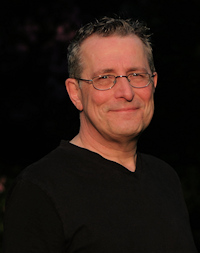About
About Hidden London
Some background information about this website, and the person behind it

Now in its fifteenth year, Hidden London was originally created to showcase extracts from what became Chambers London Gazetteer, a book that features all the localities and districts in Greater London, whether world famous or extraordinarily obscure. The website, however, concentrated on the more recondite localities, on the grounds that areas like Kensington or Covent Garden were already more than adequately covered by existing online resources. This proved a wise decision. Many more people come to Hidden London to read about minor localities such as Fish Island than much-visited places like Richmond Park (page views for the former article outweigh those for the latter by ten to one).
Hidden London now has articles on more than 750 London localities, mostly with greater historical detail than in Chambers London Gazetteer. I’ve also added some original articles on micro-localities that didn’t appear in the book, and I try to keep all the content as up-to-date as possible. To read more, see the Gazetteer section, or view the alphabetical list in the Index of Places. Alternatively, you can browse the site aimlessly, by repeatedly clicking the ‘visit a random page’ button near the top right of each page – which will most often take you to a Gazetteer article – or use the search box to find a place of particular interest to you. However, please bear in mind that the contents of Hidden London are at present selective, so you may not find every place you seek. One day, I hope not to have to say that.
All the Gazetteer pages include a map and at least one picture. A minority of the photos on Hidden London weren’t taken by me, and these are credited accordingly. All the borrowed images are licensed for reuse under Creative Commons licences and most of them are sourced from Geograph. On the subject of images, I’d also like to add a caveat borrowed from the admirable website London Remembers: “Be aware that London actually has more cars, more rain and less sun than our photos show.”

A secondary focus of Hidden London is the presentation of a series of articles on lesser-known attractions with qualities that make them worth visiting, or at least stopping to admire on your way past. This contrasts with the localities of the Gazetteer, many of which are little-known and rarely visited for good reasons.
As it evolves, The Guide will feature all sorts of publicly accessible buildings; parks, gardens and other open spaces; sculptures and curiosities situated in or visible from the public domain; historic shops and markets, pubs, cafés and the like; plus the occasional themed walk and some paired attractions located close to each other.
New articles will be appearing in The Guide at irregular intervals, so please come back every few weeks to see the latest.
Hidden London also includes some shorter, unindexed articles called ‘Nuggets’, a list of links to other London websites and very popular pages on the geography of London football, the boroughs of London and the pronunciation of London place names.
Finally, I apologise for the increasingly intrusive advertising on Hidden London nowadays, but needs must. Clicking one of the Google ads or ordering an item via one of the Amazon links (or indeed ordering anything from Amazon.co.uk within 24 hours of clicking the link) generate small emoluments that help cover the cost of running the site (less than £3 a day). Not all the ads on Hidden London are intended to earn a little revenue; there are also a few pro bono messages dotted around the site, including those for that worthy – and convivial – club London Historians.
About the author
Hidden London is researched, written, designed and (mostly) photographed by me, Russ Willey.

I’m a social sciences graduate who worked mainly in advertising and marketing before turning to the perils of self-employment as a professional writer and occasional photographer, graphic designer, website creator, editor and proofreader. (If you’d like to contact me about engaging my services in any of these capacities – especially web design – I’d be delighted to hear from you.)
I began to build Hidden London early in 2005, at first just for fun, and then increasingly with the aspiration that it would help me find a publisher for my gazetteer of London localities, an aim in which I succeeded with the assistance of literary agent Andrew Lownie. Whenever I could find the time, I continued to nurture Hidden London and it has evolved to become the world’s most visited website specialising in lesser-known London.
I hope you enjoy your visit to Hidden London – and that it tempts you to explore some new corners of the world’s most fascinating city.
Technical acknowledgements
Hidden London has been created using the WordPress content management system and the (extensively customised) ColorMag theme. Thanks to Jackie Danicki for introducing me to the wonders of WordPress. I’d also like to express my gratitude to the creators of the many clever plugins that enrich the site, including Josh Leuze for Meteor Slides and Mikko Saari for Relevanssi.
All the images on the site are created or optimised using PaintShop Pro. Most of the photographs were taken using equipment bought at the excellent Camera World, in Wells Street, W1.
Incidentally, all recommendations on this site are made altruistically, not because I’ve been paid to provide an endorsement.
